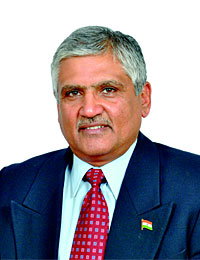Publisher's Note
 Machinery Lubrication India (MLI) magazine covers various advancements in lubrication industry and makes you a well-informed person.
Machinery Lubrication India (MLI) magazine covers various advancements in lubrication industry and makes you a well-informed person.
The launch of Chandrayaan-3 mission encountered its share of challenges, yet ISRO scientists displayed unwavering perseverance and resilience, ultimately achieving success. A few leadership and management lessons from the successful launch of Chandrayaan-3 includes: There is no such thing as failure, learning from the past and adopting a proactive approach are vital, look life beyond the lens of pass or fail. Similarly, reliability engineers will encounter setbacks during their journey, but they must remain resilient and continue to progress.
“Any intelligent fool can make things bigger, more complex, and more violent. It takes a touch of genius—and a lot of courage—to move in the opposite direction.’ —ALBERT EINSTEIN”
As rightly stated by Jim Fitch, CEO and a co-founder of Noria Corporation in one of his article, some lessons that we have learnt in lubrication and oil analysis are optimizing the state of lubrication. These are fundamental concepts that are largely underdeveloped and need to be understood as the foundation of any transformational strategy by users. Among these lessons learned include:
Lubrication is heavily influenced by behaviour science. Machines fail largely by human agency, i.e., things you do that you shouldn’t and things you don’t do that you should.
Lubricant-induced machine failure is highly controllable. The greatest amount of this control lies with the user organization.
Clean, dry and cool lubricants yield huge reliability returns (proactive maintenance).
Lubricant starvation is a pervasive, yet largely unrecognized cause of premature machine failure. Moderate lubricant starvation is often difficult or impossible to detect.
Skilful, daily one-minute inspections are very effective at early detection of many common lubrication problems. This sounds simple enough, but most routine inspections are horribly inadequate.
Users typically only get about 10 percent of the available benefit from oil analysis. Many critical improvements relating to the quality of sampling, frequency of sampling, quality of the test slate and interpretation methodology often remain untouched.
Education enriches the maintenance culture and is a strong impetus to change and improve the lubrication program.
Procedure - based maintenance strengthens the awareness and importance of correctly performed tasks. Documenting best practice in work procedures conveys the need to do the right things right the first time and every time.
Machine criticality and other risk factors should be used to properly establish maintenance priorities and focus resources. Knowing both the probability and consequences of machine failure is a much better way to optimize a program transformation.
The cover story takes a detailed look into how online sensors show their value in monitoring wind turbine gearbox (WTG). The oil cleanliness in a WTG is hugely affected by load, idle or standstill, and only sampling every six months makes trending even more inaccurate. With online sensors, you can accurately monitor many times per hour and give immediate access to trending data. Some other topics covered in this edition includes: Why lubrication should be outside the CMMS, a history of oil analysis, how to inspect a desiccant breather, story of Elijah McCoy: A founding father to machinery lubrication, how to inspect a bullseye sight glass, lubrication standards manual—the need for documentation.
We look forward to your support and feedback to enable us to improve the content and layout of Machinery Lubrication India. We welcome readers to participate by sending their feedback & contributing articles and case studies. Furthermore, we look forward to the continued patronage of the advertisers and the subscribers.
Warm regards,
Udey Dhir
